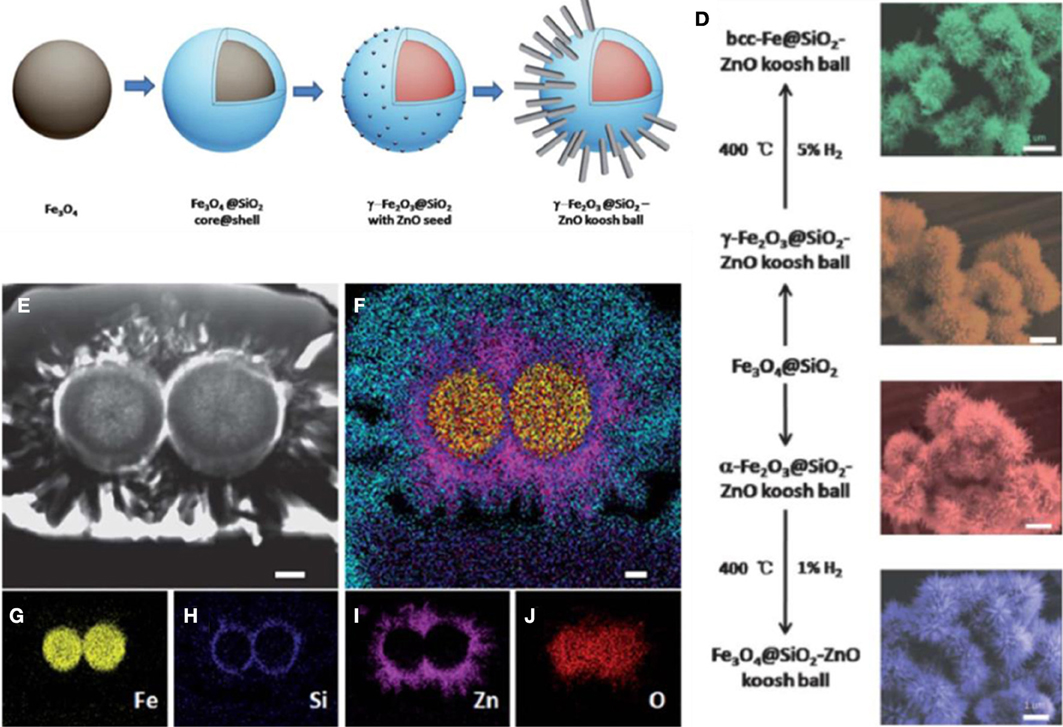

The effect of humidity on gas sensing responses is investigated for the pure ZnO and core/shell sensors. The final steady response of the pure ZnO sensor, which happens after four consecutive cycles at 270 degrees C, is 50 times lower than the initial response. The best response-recovery property is for the SiO2/ZnO-74 wt% core/shell sensor with nearly no drift in response. Compared to pure ZnO, the core/shell sensors containing more than 8 wt% silica show highly stable and reversible response-recovery properties with much lower drifts in the dynamic response to ethanol in 4 consecutive cycles. This reveals a considerable enhancement in the selectivity of core/shell sensors towards ethanol. At maximum sensing temperature, i.e., 270 degrees C, the selectivity (i.e., the ratio of sensor response to target to that of interfering gas) of core/shell sensors to ethanol, relative to the interfering gases, varied in the range of 1.8 x 10(3) to 3.24 x 10(5), compared to 61.1-5.4 x 10(3) for the pure ZnO sensor. Core/shell sensors containing more than 8 wt% silica showed a reduction in the maximum sensing temperature of at least 50 degrees C, compared to that of the pure ZnO sensor. Then, the sensors were applied for sensing 300 ppm of ethanol, carbon monoxide, toluene, trichloroethylene (TCE), or propane and 1% methane in air at 270-420 degrees C. The results confirm the formation of ZnO layers on silica core nanoparticles. The prepared samples were characterized by XRD, EDS, SEM, DLS, and TEM analyses. As for the core, uniform silica spherical particles were synthesized by a microemulsion technique. SiO2/ZnO core/shell and composite sensors with 22-97 wt% ZnO content were synthesized by a facile ultrasonicassisted deposition-precipitation method.


 0 kommentar(er)
0 kommentar(er)
